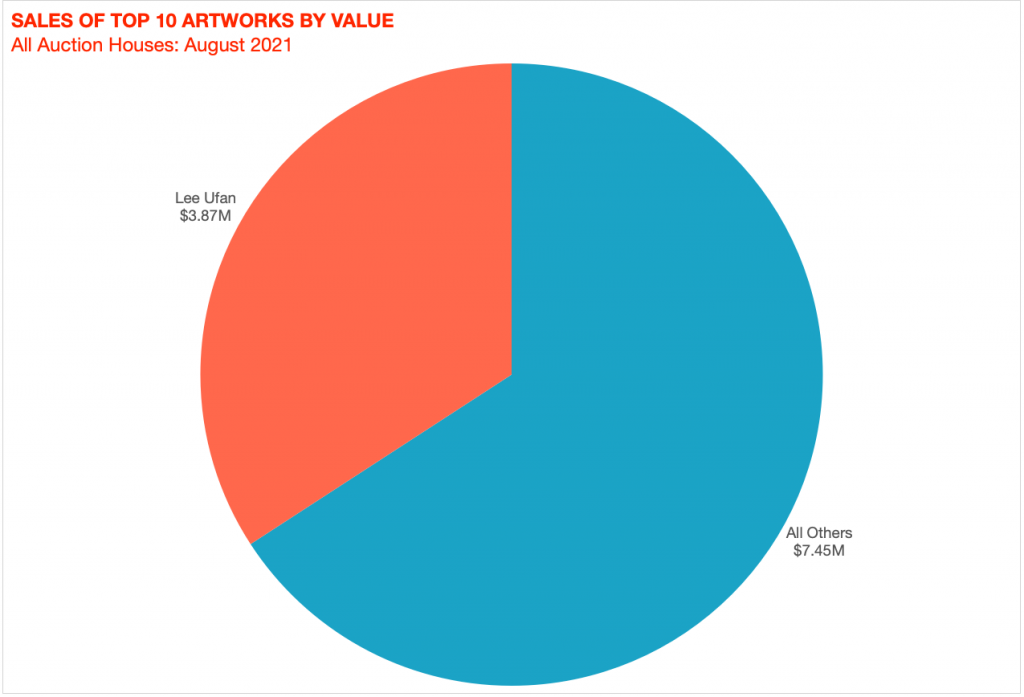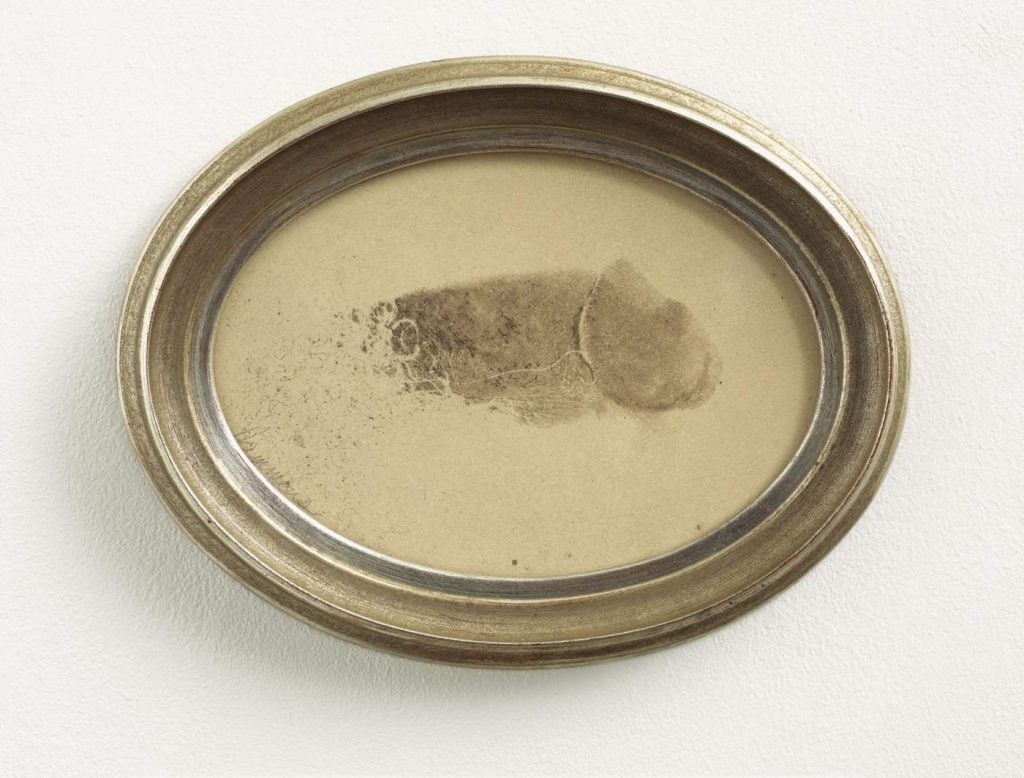The Back Room
The Back Room: New Steps in Old Spaces
This week in the Back Room: Art Basel’s about-face, August’s unexpected auction king, Hollein holds forth, and much more

This week in the Back Room: Art Basel’s about-face, August’s unexpected auction king, Hollein holds forth, and much more

Tim Schneider

Every Friday, Artnet News Pro members get exclusive access to the Back Room, our lively recap funneling only the week’s must-know intel into a nimble read you’ll actually enjoy.
This week in the Back Room: Art Basel’s about-face, August’s unexpected auction king, Hollein holds forth, and much more—all in an 8-minute read (2,444 words).
__________________________________________________________________________________

A visitor arrives at the 2019 edition of Art Basel, the last in-person version of the fair. (Photo by Fabrice Coffrini/AFP via Getty Images.)
Before Armory Week sales could give us our next litmus test of the post-vaccine art market, the next major fair on the calendar took over the laboratory.
On Monday, I broke the news that Art Basel had established a CHF 1.5 million ($1.6 million) “one-time solidarity fund” for the galleries in its flagship fair just 15 days before the VIP opening. The policy raises a number of important questions about the short- and long-term future of high-end art fairs.
A pot of money allocated by Art Basel that every exhibitor will be able to opt into (or out of) in the roughly two weeks between the end of the fair and the date they are invoiced for the balance owed for their booths—meaning only once they know their actual sales results.
According to Art Basel, if all 272 confirmed exhibitors opt in, each would receive an additional 10 percent reduction on their square-meter booth rate. (That would bring the total decrease provided to exhibitors to 20 percent; they received an initial 10 percent reduction after committing to the fair this spring.)
Because of exhibitors’ mounting concerns about how the Delta variant and a raft of related, late-breaking health regulations could impact sales and attendance at the fair.
Here’s how spooked people are: In the same letter announcing the solidarity fund, Art Basel also pledged to cover all additional costs incurred for hotel stays and travel rebooking should gallery staff need to quarantine after contracting COVID during the fair. That’s a surreal first.
The dealers I reached were all enthusiastic.
That depends. Since the fund’s piggy bank stays the same size regardless of the number of dealers who opt in, the payment to each recipient increases with every gallery who opts out. Art Basel global director Marc Spiegler told me he hopes this incentivizes galleries with healthy sales to “pass that reduction on to their colleagues who need it.”
But Art Basel will keep all information about the fund’s beneficiaries confidential, which sets up a fascinating sociological experiment in the high-end art market.
I think many, if not most, dealers who do well at Art Basel will do the latter… but maybe not all of them.
Probably not among Art Basel’s competitors. No other fairs released their own codes of conduct after Spiegler and company issued their Art Market Principles and Best Practices in 2017. Frieze also insisted its sliding scale for booth fees had been in the works well before Art Basel announced in 2018 it would charge a progressively steeper square-meter rate to exhibitors renting larger stands.
But Art Basel may have a harder time treating the solidarity fund as a one-off at its own fairs. As author Yuval Noah Harari (of Sapiens fame) wrote early in the pandemic, “temporary measures have a nasty habit of outlasting emergencies, especially as there is always a new emergency lurking on the horizon.” That seems especially true with Art Basel Miami Beach set to open in Florida, arguably a worse COVID hotspot than Switzerland, less than three months from now.
A last point worth remembering: This spring, Art Dubai piloted a scheme allowing exhibitors to mitigate their risk of COVID disruptions by paying nothing up front in exchange for 50 percent of sales proceeds up to the value of their booths. It worked so well for all involved that the fair will now reprise the plan for “young galleries” in 2022, according to CEO Ben Floyd.
__________________________________________________________________________________
Despite the high marks the solidarity fund has received so far, what matters most in the short term is whether collectors travel to (and actually buy at) Art Basel. I’m sure the fair is mobilizing heaven and earth to try to ensure they do, but no one knows the outcome today.
Looking further ahead, the solidarity fund does address a longstanding structural problem in high-end art fairs. If it proves to be as popular among exhibitors as the early returns suggest—and if much of the fund indeed goes toward only the neediest galleries, without serious scandal—then Art Basel might feel it’s good long-term business to find a way to change its tune on the fund’s longevity, especially in a climate where even major dealers (like the newly formed LGDR) are pledging to permanently and drastically dial down their fair spending.
__________________________________________________________________________________
Wet Paint will be up later today, but here’s what else made a mark in the industry this week.
Art Fairs
Frieze London could be threatened by the U.K. government’s last-resort plans for a “firebreak” lockdown in October should coronavirus hospitalizations continue to rise at the current rate.
Paris’s Salon Galeristes, which was slated to take place alongside FIAC in October, is the latest boutique art fair to pull the plug on its 2021 edition.
Emerging art fair Paris Internationale will forge ahead with its seventh edition, which runs October 20–24 at 186 Avenue Victor Hugo.
Organizer 4heads has cancelled the Portal: Governors Island art fair due to COVID concerns.
Boutique fair Eye of the Collector (September 8-11) and Photo London (September 8–12) have opened the fall art fair season in London.
Auction Houses
As reported by Katya Kazakina last month, Sotheby’s officially announced it had won the war to consign the $600+ million collection of dueling divorcees Harry and Linda Macklowe.
Christie’s announced its major New York 21st century evening sale (November 9) and day sale (November 12) will split 29 Pictures Generation works from a private collection, led by a Christopher Wool abstract expected to notch $6 million to $8 million.
Phillips will hold a 65-lot sale of contemporary photos from an unnamed Seattle-based collector at its New York headquarters On October 7, featuring works by Diane Arbus, Roni Horn, Peter Hujar, and others.
Galleries
Institutions
Nicolas Berggruen, the billionaire art collector and founder of the Berggruen Institute in Los Angeles, has opened a new European HQ inside a neo-gothic palazzo on the island of Giudecca in Venice.
The Institute of Contemporary Art San Francisco, a new museum with a social justice bent funded by the Minnesota Street Project Foundation, will open in the Bay Area in summer or fall 2022, under the leadership of Alison Gass.
The African American Museum in Philadelphia named Dr. Ashley Jordan as its next president and CEO. Her most recent post was as senior director of development at the National Underground Railroad Freedom Center in Cincinnati, Ohio.
NFTs and More
In news that momentarily made me think, “Hm, maybe leaping into an active volcano wouldn’t be so bad,” Jeff Koons announced that he will issue NFTs “within a year’s time.”
Legendary filmmaker Wong Kar-wai will offer an NFT connected to unseen footage from his 2000 masterpiece In the Mood for Love in a sale of his film memorabilia at Sotheby’s Hong Kong on October 10.
New York dealer and entrepreneur Asher Edelman has been sued for more than $800,000 in damages by Uganda’s permanent mission to the United Nations, which owns the Lenox Hill townhouse on which his businesses, Edelman Arts and Artemus, owe $470,000 in back rent.
__________________________________________________________________________________

© Artnet Price Database and Artnet Analytics 2021.
South Korea was a driving force in the international fine-art auction market last month, so it should come as no surprise that one of the nation’s own dominated the ranks of the best sellers.
Lee Ufan was responsible for three of August’s top 10 fine-art lots by value, amassing nearly $3.9 million versus less than $7.5 million by the other seven artists in contention. That means Ufan (who is of Korean heritage but has long split his time between Japan and Paris) attracted almost 35 percent of the dollars spent on the most sought-after cohort.
The priciest work of the month was Ufan’s brushstroke-packed gestural abstraction East Winds (1984), which went for a record ₩3.1 million ($2.7 million) at Seoul Auction. The painting outperformed Ufan’s previous auction apex by a cool half a million dollars, signaling once again that there is plenty more room to grow in southeast Asia’s art market.
You can find even more info on August’s top lots from Julia Halperin here.
__________________________________________________________________________________
“We were told, ‘Earned revenues are lower today than they were in 2015.’ Why, then, had executive salaries increased by 20 percent over the previous five years? Why, then, were they funding an $89 million expansion plan? Why, then, could they afford a white-shoe law firm whose services, we discovered—thanks to a longstanding executive practice of accidentally leaving important papers in the printer tray—cost the museum $600,000 in 2019 and 2020?”
—Dana Kopel, a key figure in the New Museum’s unionization battle, on the financial dissonance in management’s argument that the union’s salary and health-care proposals were untenable.
__________________________________________________________________________________
Metropolitan Museum of Art director Max Hollein held court with Katya on the museum’s plans for everything from its upcoming deaccession, to crypto, to the legacy of Chuck Close. (Artnet News Pro)
Here are the “saved you a click” highlights…
__________________________________________________________________________________
More and more venture capitalists are betting on crypto-mania’s endurance by funneling millions into art-tech startups. Case in point: NFT marketplace MakersPlace recently secured a $30 million vote of confidence from angel investors. (The Art Newspaper)
__________________________________________________________________________________
Art Basel and UBS‘s latest report on the global art market finds that galleries are powering through pandemic barriers thanks to sales in Asia, digital breakthroughs, and acquisitions by high net worth millennial women. (Artnet News)
A recent rash of forgeries and antiquities-smuggling by art restorers has led authorities and the art world to ask whether the field of conservation needs stricter regulations. (TAN)

David Hammons, Untitled (Penis Print) (ca. 1969–73). Courtesy of White Cube.
__________________________________________________________________________________
Date: ca. 1969–73
Seller: White Cube
Price: $335,000
Selling at: TEFAF Online
Sale Date: Through Monday, September 13
__________________________________________________________________________________
Although art fair weeks are always good for a few surprises, I did not anticipate encountering an imprint of David Hammons’s manhood in the preview for the latest iteration of TEFAF Online. But Untitled (Penis Print), an elliptical six-by-eight inch entry from the artist’s celebrated “Body” print series, makes more sense in this classically inclined context than you might think.
White Cube senior director Mathieu Paris said that we “cannot escape the parallel” between this particular work and Gustave Courbet’s conceptually audacious, sexually charged L’origine du Monde (1866). However, Hammons’s piece also adds the cultural complexities of Black masculinity into the congress between artist, body, and creative act. “It is a study in race and sexuality, masterfully balancing the performative with the self-representational,” Mathieu said.
It also presents a rare opportunity for collectors. Only 11 monochrome “Body” prints by Hammons have come to auction since 2000, according to the Artnet Price Database. Two larger examples centered on the artist’s face sold for between $727,000 and $870,000 in 2019. Untitled (Penis Print) is undoubtedly more of a connoisseur’s piece, but isn’t that what TEFAF is all about in the end?
__________________________________________________________________________________